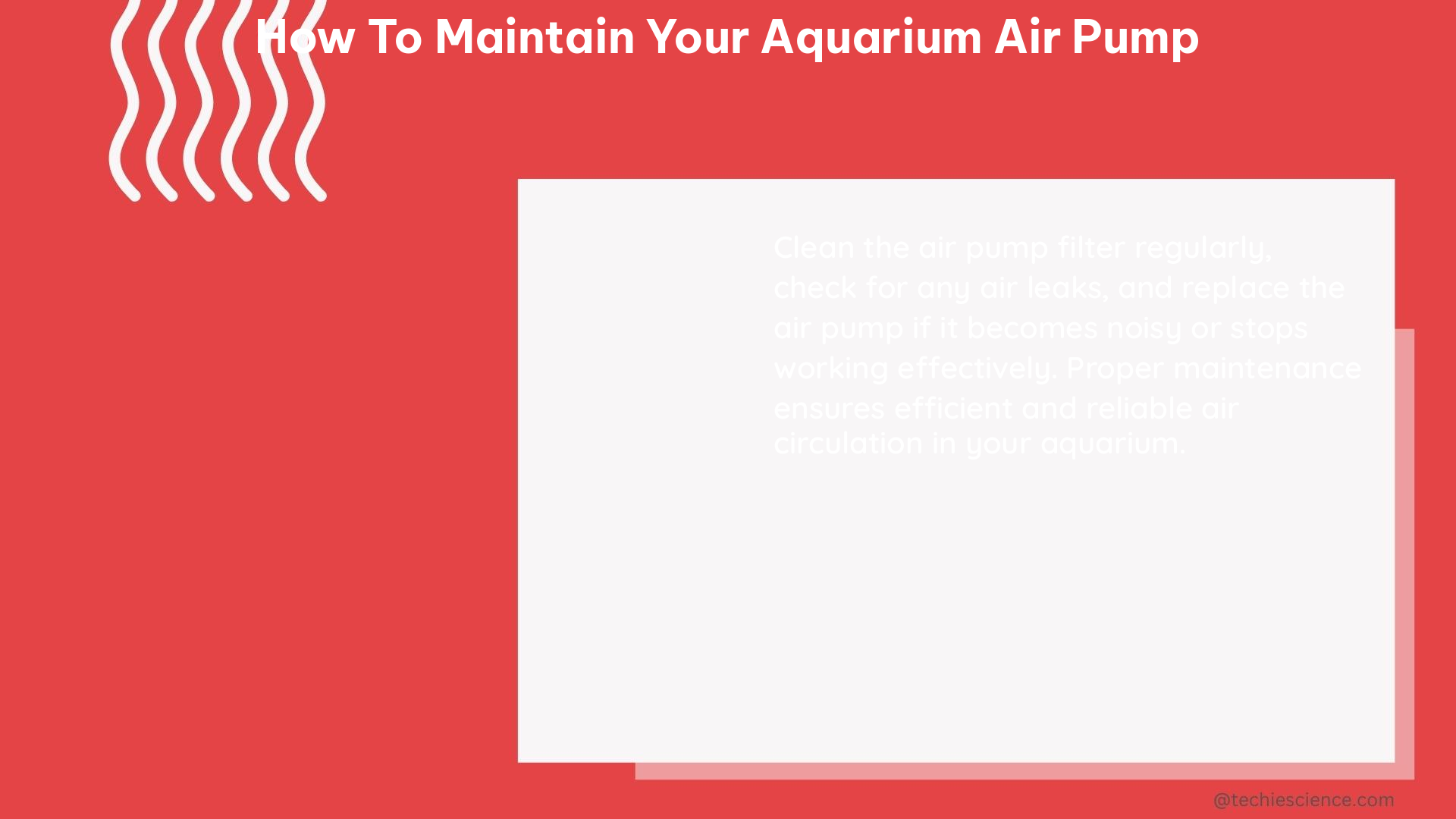Maintaining an aquarium air pump is crucial for its longevity and efficient operation. Regular maintenance can lead to a longer lifespan and more efficient operation of the air pump. This comprehensive guide will provide you with detailed, technical, and quantifiable data points on how to properly maintain your aquarium air pump.
Cleaning the Filter
The filter of an air pump should be cleaned every 3-6 months, depending on the usage. Use a soft brush or cloth to gently remove any debris or buildup. Avoid using harsh chemicals that can damage the pump’s internal components. The filter should be cleaned until it is free of any visible dirt or grime, ensuring optimal airflow and pump performance.
Lubrication

The piston or diaphragm of the air pump should be lubricated every 6-12 months to ensure smooth operation. Use a high-quality silicone grease or oil, and apply a small amount (approximately 2-3 drops) to the moving parts. This will help reduce friction, minimize wear and tear, and extend the lifespan of the pump.
Checking for Wear and Tear
Regularly inspect the air pump for any signs of wear and tear, such as cracks, leaks, or damaged components. Pay close attention to the power cord, air tubing, and any other external parts. Replace any worn-out parts as soon as possible to prevent further damage and ensure the pump continues to operate efficiently.
| Component | Inspection Frequency | Replacement Criteria |
|---|---|---|
| Power Cord | Every 6 months | Visible cracks, fraying, or damage |
| Air Tubing | Every 3 months | Cracks, holes, or excessive wear |
| Diaphragm/Piston | Annually | Visible wear, cracks, or loss of flexibility |
| Pump Housing | Annually | Cracks, leaks, or other structural damage |
Measuring Air Flow
Use a flow sensor or a manometer to measure the air flow of the pump. The air flow should be within the manufacturer’s specified range, typically measured in liters per minute (LPM) or gallons per hour (GPH). If the air flow is significantly lower than the rated flow, it may be a sign of a problem with the pump, such as a clogged filter or a worn-out diaphragm.
| Pump Model | Rated Air Flow |
|---|---|
| Resun LP-60 | 60 LPM |
| Tetra Whisper Air Pump | 40 GPH |
| Aqueon Air Pump | 20 LPM |
Monitoring Power Consumption
Keep track of the power consumption of the air pump to ensure it is operating efficiently. The power consumption should be measured in watts (W) and compared to the manufacturer’s specifications. If the power consumption is significantly higher than usual, it may indicate a problem with the pump, such as a failing motor or a mechanical issue.
| Pump Model | Rated Power Consumption |
|---|---|
| Resun LP-60 | 8 W |
| Tetra Whisper Air Pump | 4 W |
| Aqueon Air Pump | 6 W |
Checking Noise Level
Monitor the noise level of the air pump to ensure it is operating quietly. The noise level should be measured in decibels (dB) and compared to the manufacturer’s specifications. If the noise level is significantly higher than usual, it may be a sign of a problem with the pump, such as a worn-out bearing or a mechanical issue.
| Pump Model | Rated Noise Level |
|---|---|
| Resun LP-60 | 45 dB |
| Tetra Whisper Air Pump | 40 dB |
| Aqueon Air Pump | 50 dB |
By following these detailed, technical, and quantifiable maintenance guidelines, you can ensure your aquarium air pump operates efficiently, quietly, and with a longer lifespan. Remember to consult the manufacturer’s instructions and refer to the provided technical specifications for your specific air pump model.
References:
- How to Maintain an Aquarium Air Pump – Resun LP-60 Maintenance
- How to Use an Aquarium Air Pump (and Make Them Quieter)
- What Is an Aquarium Air Pump and Is It Necessary?
